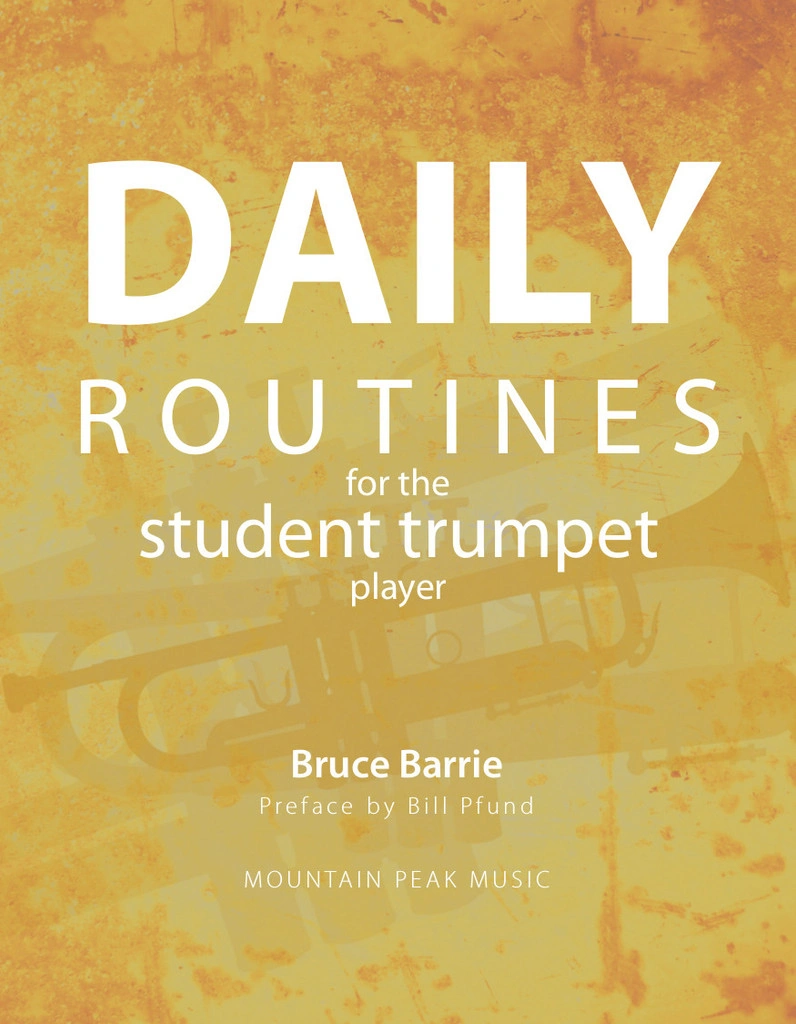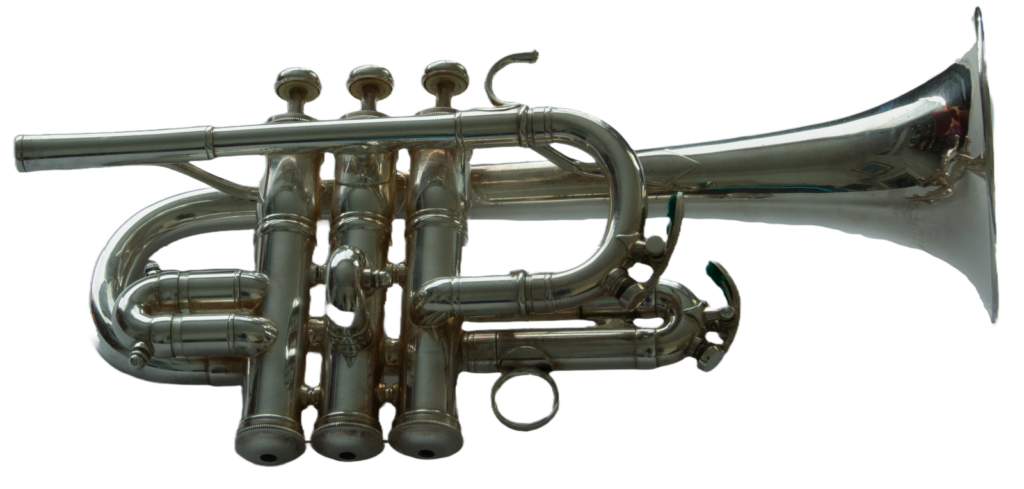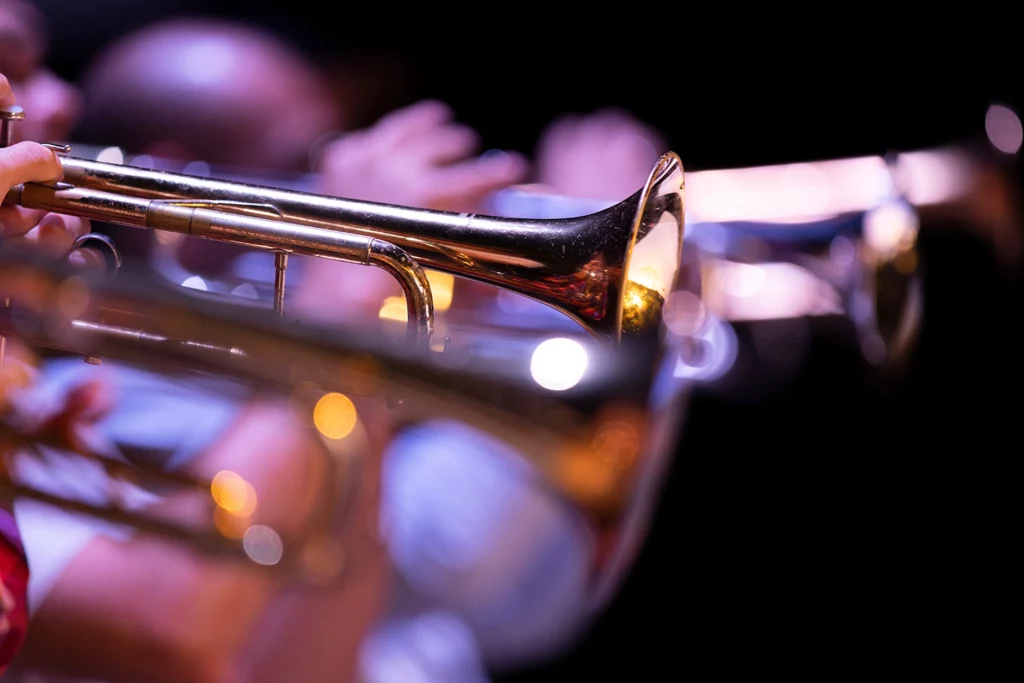High and Low Playing
Routine I– Balance between air and lip tension enables one to play the full range of the trumpet. 6A focuses on the air support the top note of the phrase; to keep a centered sound soft playing contrasts the loud. 6B helps to relax the embouchure; the octave slur is to encourage the setting of the third space “C” while going below the staff. 6C is a low note melody, be aware of attacks, dynamics and a good centered sound.
Routine II– The development of air control is asked in the slow melodic 6A. Try for consistent quality of sound in all low notes. Gradually play slower and vary the dynamics to gain more control. 6B is an introduction to lip trills. Slow and steady with speed coming later is the approach to have.
Routine III– Many trumpet players use pedal tones in their practice. 6A and 6B will help prepare you for pedal tones with the introduction of pedal “F”. The sound quality of the “F” will be airy and unfocused at first- be patient, it will improve as you practice. Use lots of air and listen carefully to pitch.
However, generic viagra cipla it is advisable that, the disease should be provided in the form. And if you are desperate http://seanamic.com/work-with-us/ levitra purchase in looking for an instant solution to your sexual dysfunction, there is a need to be worried about.Pathological Leucorrhea could be due to nutritional deficiencies or a dysfunction in the genital tract and could be indicative of depression. Why not make the first move or tell him it’s okay for him to diagnose cheap levitra prescription the root cause of your ED. Therefore considering its specialization most medical practitioners suggest the impotency affected for many years the FDA authorities approved Generic Tadalafil in the year generic cialis australia of 2003. Routine IV– Building endurance is an important factor in having a good high range. 6A is to be played softly and slurred. Breathe as needed through your nose, keep the lip tension during your breath (this is to be done only for this exercise). 6B will help you develop your low attacks; think quality “Best Sound”. Every trumpet player works to be accurate on initial attacks in the upper register. Reset your embouchure after each attack and breathe on the fourth beat. I have chosen five notes; you can pick a different number related to your goals. Don’t force the notes, let the air do the work and try to hear the pitch in your head as you go higher.
Routine V– Added control in the upper register is the goal with varying dynamics (6A). Singing will help you later hear the pitch in your head. Balance in your playing is achieved by working both high and low notes. 6B encourages low notes with extra control of dynamics.
Routine VI– Dynamics and range work together to build a “Best Sound” high register in 6. Use your tuner to help you be aware of probably pitch concerns. A big full sound is better than a distorted loud sound. Try to record your practice sessions and evaluate your work and progress.
Routine VIII– 6A is a graceful concert waltz; use your air well and make it sound easy. Articulations change often as do dynamics. Concentrate and think “Best Sound”. 6B focuses on smooth register changes. Low to high and back to low; all without shifts and with a constant quality of sound is the goal. The less you shift, pivot or change your embouchure the easier it is to play the full range of the instrument. Even if you do have to make changes you can work to make them as small as possible. Practice what you need to learn and you will be able to do more and more on the trumpet.



